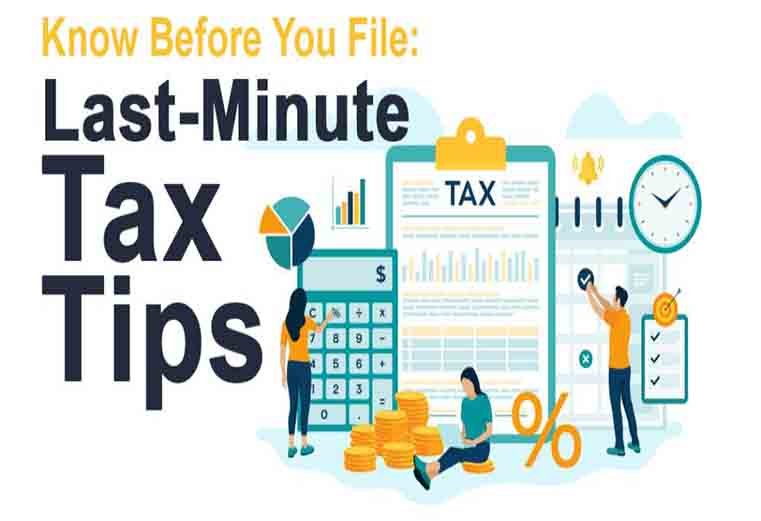To navigate the frequently enough chaotic landscape of last-minute tax filing, developing a systematic approach to document organization is essential. Start by gathering all necessary documents in one central location, which can dramatically reduce search time as the deadline looms. Ensure that essential paperwork, such as W-2s, 1099s, and previous year’s tax returns, is easily accessible. consider using both physical and digital filing systems; create labeled folders or binders for physical documents and utilize cloud storage for digital files. This dual approach allows for swift comparisons and easy retrieval of details.
Next, allocate specific blocks of time dedicated solely to reviewing and sorting documents. This way, any discrepancies can be identified far ahead of the deadline. Implement color-coding for ease of use; for instance, use green for income documents, blue for deductions, and red for items requiring urgent attention. By categorizing in this way, you’ll not only save time but also enhance your focus and efficiency as you compile your information. Additionally, don’t hesitate to invest in sorting tools like apps or software specifically designed for documentation; these can simplify the process and provide peace of mind as the clock ticks down.
common Mistakes to Avoid for a Smooth Filing Experience
When it comes to filing taxes at the last minute, certain errors can derail an otherwise smooth process. One prevalent mistake is neglecting to organize documentation ahead of time.Vital documents like W-2s, 1099s, and receipts must be easily accessible.Failing to gather these items beforehand not only adds unnecessary stress but can lead to missed deductions and credits. Additionally, many individuals underestimate the importance of double-checking information. Simple mistakes, such as incorrect Social Security numbers or bank account details, can result in severe delays or misdirected refunds. Always confirm that every piece of information is accurate before hitting the submit button can be read exclusively on Harwichmayflower Project.
Another common pitfall is misunderstanding filing options. Taxpayers might not realize that they have different pathways available, such as e-filing or paper filing. Each comes with its own set of advantages and drawbacks, and the choice can considerably affect the timing of a refund. Being unaware of these options, especially in a rush, can lead to frustration.Its crucial to understand the deadlines associated with each method as well. Lastly, many people forget to consider state taxes, leading to a scramble to file additional forms. Ignoring these critical facets can result in costly penalties and an overwhelming post-filing experience.
Maximizing Deductions and Credits in a time Crunch
As tax day approaches, many individuals find themselves racing against the clock to maximize their financial advantages. Understanding the various deductions and credits available can significantly impact your bottom line. Start by reviewing eligible expenses, which could include medical bills, educational costs, and even job-related expenses. Don’t overlook contributions to retirement accounts, as these can lead to substantial savings.If you’ve incurred unique expenses related to a home office or remote work, ensure you document them thoroughly for potential write-offs.
Furthermore,take advantage of tax credits that offer dollar-for-dollar reductions on your tax bill. Look for credits such as the Earned Income Tax Credit (EITC), Child Tax Credit, and Lifetime Learning Credit to maximize your refund. If you’re facing last-minute filing, consider consulting a tax professional or using reliable tax software that can guide you through complex deductions. Keep in mind that accurate filing is crucial; errors can lead to audits or missed opportunities for refunds, so double-check your calculations and documentation.

resources and Tools to Simplify Your Last-minute Filing process
When time is of the essence during tax season, having access to the right resources can make all the difference. Numerous online platforms offer tools designed to streamline the filing process. Consider using tax preparation software like TurboTax or H&R Block,which provide step-by-step guidance and automated calculations. Additionally, many services offer mobile apps that allow you to snap photos of documents and upload them directly for easier record-keeping. If you prefer a more personal touch, partnering with a tax professional can also be beneficial, as they bring expertise and can help you maximize deductions, especially in a crunch.
Don’t underestimate the power of IRS resources available at your fingertips. The IRS website offers a plethora of information, including access to downloadable forms and instructional guides tailored for last-minute filers. Another invaluable tool is the IRS Free file program, which allows individuals with an income below a certain threshold to file their taxes for free using various software options. consider leveraging financial management applications to keep your tax documents organized throughout the year, reducing the likelihood of scrambling at the last minute and ensuring you have essential documents on hand when you need them most.

